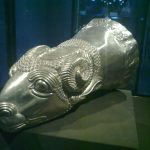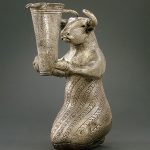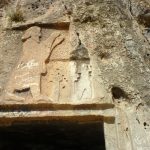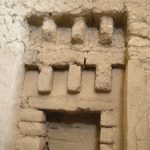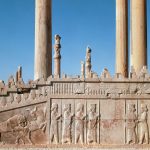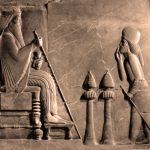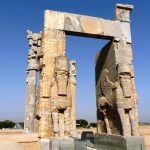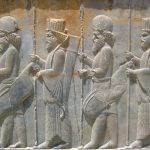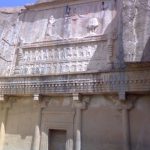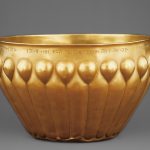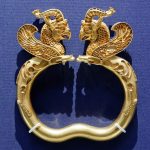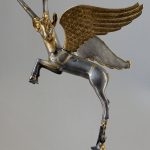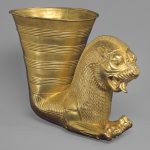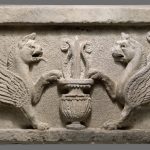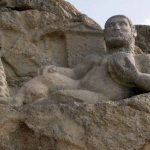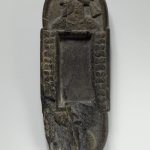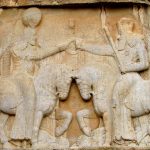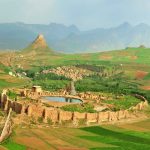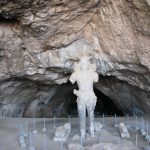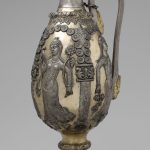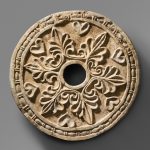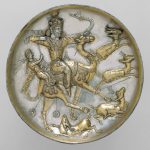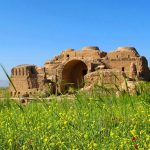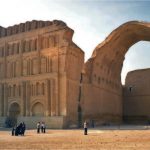Iran
Iran is a vast land area of 1,648,000 square kilometers and is located in Southwest Asia, among Turkmenistan, Azerbaijan and Armenia in the north, Afghanistan and Pakistan in the East and West in Turkey and Iraq.Across the southern borders of Iran surrounds Persian Gulf and Oman Sea coast. Iran is located in the heart of the Middle East and is connected bridges the Caspian Sea, the most beautiful lake in the world to Persian Gulf.Iran, with climate and biological diversity is among the five countries in the world and among the top 10 countries of in terms of historically and culturally. In other words, our country is among the top 10 countries in terms of tourist attractions in the world.
One of the most Important Specifications of tourism in Iran is: soaring mountains, plains, flat plains, desert areas, rivers and lakes.
Iran’s most important peaks are: Damavand, northeast of Tehran with a height of 5671 meters, Sabalan in the west with a height of 4880 meters, Sahand in south ofTabriz at an altitude of 3707 meters, Takht-e Soleiman in the center of Mazandaran with a height of 4820 meters, the Bakhtiari yellow mountain height of 4550 meters, Dena with a height of 4309 meters north of Yasouj, Taftan in the south Zahedan at an altitude of 3941 meters and ten other peaks that are scattered across the country.
The complexity and variety of limestone formations has created, caves prevalence in different provinces, especially in Azerbaijan and Hamadan, Which attracted the attention of numerous tourists who travel to Iran to visit inside the Caves.Iranian Mountains belong to the Tertiary geological folds, and they have created suitable conditions for winter sports and Mountainous.
Famous deserts of Iran, Dasht-e Lut and Dasht-e kavir have been extended in an area including more than 360 thousand square kilometers and are considered as a remarkable and undiscovered area.
Iran is known with more than 500 mineral springs and hot water, all of them which used to supply drinking water and sanitary treatment, one of the most important sources of tourism income at its disposal.Most of these springs are located on Alborz mountain range, Azerbaijan and Zagros and some of them are near Isfahan, Mashhad and Bandar Abbas.Sareyn mineral springs of Ardabil, Larijan warm water mineral springs in the foothills of Alborz and mineral springs in Mahalat and attract Thousands of people for recreational and therapeutic
Iran is composed of 31 provinces now. Tehran is the current Iranian capital. Iran is one of the unique countries in terms of water and air. The difference air temperature between the hottest and coldest point in the winter sometimes is reached more than 50 ° C. The hottest spot of land in 2004 and 2005 is at a point in the Iran’s Lut Desert. Iran is semi-arid and dry in term of rainfall.
75 languages and dialects are common in Iran generally. The official language of Iran is Persian. Persian is one of the branches of the Indo-European languages.
Until the early twentieth century, the people all around the world knew our country with the official title “Pars or Persian“. But during the reign of Reza Shah Pahlavi, who was emphasized on ancient and Iran pre- Islamic era a sum ancient oriented intellectuals like ‘’Saeid nafisi’’, ‘’Mohammad ali foroughi’’ and Sayed hassan taghizadeh had gathered to do something for this purpose then one of them suggest Iran country’s name officially change into “IRAN’’, this proposal became reality in December 1934 AD.
The history of civilization in Iran is reached to Elam civilization, Burnt City and Jiroft But the political history of Iran since the Iranian monarchy started at the time of Medes era. Median Empire was the Persian Empire, therefore, considered as the start date of the king history of Iran.
History of Iran
Essentially Iran’s history divided into two sections: pre- Islamic period and after the Islamic period that these are also divided into smaller parts.
Iran’s pre- Islamic period history is divided into three parts:
Iran before the Aryans
Aryans migrated to Iran
The Ancient Persia
History of Iran before the Aryans:
Before the Aryans the various ethnic groups lived in different parts of the Iranian plateau. On Iran’s before the Aryans were civilizations Burnt City (Sistan), Elamite (in the north of Khuzestan), Jiroft Civilization (Kerman), Tepe Sialk civilization residents (Kashan), the civilization of Urartu (in Azerbaijan), Gyan Hill (in Skinheads), Kasyha civilization (in Kermanshah and Lorestan) and Tapurha in Tabaristan (Mazandaran) in Iranian territory.Elam state history’s has been greatest civilizations that their land has been in southwest of Iran and more or less in accordance with Khuzestan.The capital of Elamite was Susa that Works related to them have been found in this city. Apparently different wards in a kingdom of Elam had their separate governments. The four regions were Evan, Anshan, Symsh and Susa.Elam state often had been at war with more developed countries of Mesopotamia: the Sumerian, Akkadian, Babylonian and Assyrian.This government, in the course of the history has been the greatest forces in the region.Since the advent of the Persian Empire (550Qm) Elam has been tributary provinces of Iran. At this time also Susa was rich city of magnificent. Elamite was one of the three languages that Iran’s royal texts have been written in those languages.
Migration of Aryans to Iran:
Aryans are branch of the wide range of white races that likely the original homeland of them was the northern Black Sea region and the Caspian until around Oxus Rivers.Then some parts of them have moved toward Europe and some categories have moved to Persia and India thereafter.Aryans of India and Iran have long lived together and were separated for a long time, before the separation, they have had myths and shared language and social organization. In the history books of Iran have written the coming of the Aryans to Iran refers to 2,000 years BC and some others 14th century or 6th century BC .After entering Aryans to Iran they allocated tribes, the most important of them are Parthian, Medes and Persians.The name of Iran has been taken from Aryan’s name; it means the land of the Aryans.
Ancient history:
History of Ancient Iran is known from a Medes government until the end of the Sassanid era and the Arab conquest of Iran.
Medes (708 -550 BC):
The Medes were an Iranian people of Aryan descent who settled in the western part of the Iranian plateau. Median territory covers the western part of the Iranian Plateau.Median capital of Ecbatana (modern Hamadan) is in the early seventh century BC, they were able to establish the first state history. Median government was overthrown in 550 BC by Cyrus and Iranian monarchy was transferred to the Persians.‘’Diaco’’ was first king of the Medes and established his capital in Hegmataneh and was perfumed it with royal palace that dominates the city.The most prominent monuments of Median age can be noted ‘’Nooshijan hills’’, is an area 60 kilometers south of Hamedan. The hill was in the second half of the eighth century to the first half of the sixth century BC by the Medes residential also ‘’Medes clay’’ and ‘’Medes Rhyton’’, Rhyton is a Greek word and the Container is consist of two part and rock tombs that named ‘’Gor-dakhmeh’’ in Iran.
Achaemenid (550 to 330 BC):
Achaemenid was ancestor of this dynasty, the Persian tribes got under its own command. After him, his son was king in ‘’Anshan’’, area (East Shoshtar). They were declared Pasargad to his center later. Until Cyrus III (the Great), ruled six king of the dynasty.The most important and eye catching monument is perspolis and pasargad in Achaemenid dynasty.
Persepolis, also known as‘’Takht-e-Jamshid’’ was the ceremonial capital of the Achaemenid Empire.In this ancient city there is a palace named Takht-e-jamshid that was built during the reign of Darius, Xerxes and Artaxerxes I was built and was built for about 200 year. This location has been recorded one of Iran’s UNESCO World Heritage Site since 1979.
Pasargadae World Heritage collection is a set of ancient structures in the city during the Achaemenid dynasty. There is a great viewpoint where we can look over the site and the surrounding area. This set is the fifth set registered in the World Heritage List in Iran.
Parthian (250 BC t- about 226 AD):
Parthian appreciated Greek civilization had arisen in Iran in the Seleucid period, some of the Parthian king knew Greek literature well and some Greek theater offered in the court of the Parthian.At that session there was an assembly called to‘’Mahestan’’ which was composed of two assembly .one of them was the house of nobility and another ones were wise and magi houses that had aspect of the Consultative Council who did not have much influence on affairs.In the course of history, animal husbandry and agriculture and trade flourished plenty and slavery grew. Their religion was Zoroastrianism, as well as ancestor worship. Other religions also had free. Ashk 22 (first Balash) who set to collect Avesta.Their language was the middle Persian that caused by excessive exposure to the Roman language and Roman civilization influence is in their court.The works of this period of history are such as Temple in Kangavar, Kangavar temple ruins, relief of Mehrdad and Goudarz‘s period in Bisotun.The most prominent monuments of Parthian age can be noted ‘’Nesa’’ one of the oldest cities of parthians and was the first capital .this city is one the most important monument of this era.this is in the 18 kilometers Eshghabad in Turkmenistan country.
Sassanid(651 to 224 AD):
Sassanian was Persian Empire in the history of Iran Who ruled from 651 to 224 AD. Sassanid Empire’s origin was from Persia province was overpowered on much of West Asia. Sassanid capital was Ctesiphon, near Baghdad, Iraq today. Parthian dynasty was ended by the Ardeshir Sassanid II. He founded the Sassanid dynasty that lasted until 652 AD in Iran,Sassanid government was National Government relies on Iranian religion and civilization. In the course of the wars in Iran and Rome continued.
Iran after the Islamic period:
After the establishment of Islam in Iran as a result of the victory’s Muslim Arabs over the Sassanid and conquered Persia by them, Many developments was born in the fields of social, religious and political history . The Muslim conquest of Iran was not simply. Eastern part of Iran and Gilan and Tabaretsan were captured later the western periphery by Muslims, They had to conquer a place again and again.When the Umayyad and Abbasids were dominated on Iran, The Iranians never hide their opposition to the rule of the Umayyad and Abbasids on Iranian soil and erected Independence movements.The formation of states such as Tahirid (881-826 AD) and Saffarid (903-866 AD) can be seen from the results outlined.In the history of Iran Tahirid dynasty brought to independence the eastern part of Iran like Khorasan for the first time since the advent of Islam. Saffarid also for the first time used the foreign language instead of Arabic. Since The samanid dynasty (999- 819 AD) the modern Persian language emerged as, Arabic alphabet spread by Farsi language. Buyid governors (1055-945 AD) moved to Baghdad after their conquest of Shiraz and establish their reign then captured it and the real power was in their hands.After Buyid dynasty Ghaznavid came to power and put its invasion Territories such as India.
Seljuks (1194- 1038 AD) established his rule with a victory over Ghaznavids and Iran took under his control and they have consolidated their power with the help of the great ministers and scientists. But eventually disappeared byKhwarazmian(Khwārazmshāhiyān) .Khwarazmian government (1231-1077 AD) was one of the reign in the history of Iran that began The Mongols attack on Iran.As a result of the invasion and looting towns and massacre of the Iranian people was overthrowing the Khwarazmian government. Mongols was captured Iranian territory quickly. In addition to campaign to Baghdad and the murder of Abbasid Caliphate dismantled the Islamic caliphate.
Since The Safavid period (1732-1501 AD) the Shi’i was as the official religion of Iran for the first time in the history. Shi’i independence with its social and political features of the unity and of Iran’s In Shah Abbas the great era the Isfahan, was chosen as the capital of Iran. Reached the pinnacle of glory and remains So many memories from that time to the present time also remain in place. Then Afghans attack to Iran and Seized the Isfahan.
Nader Shah defeated the Afghans and also over all the territory of Iran, founded Afsharid Dynasty (1734 AD).after afsharid dynasty, zand rely on their power and during their rule, the Shiraz city became the capital. Qajar (1924-1779 AD) was a period of history that permeates the colonial powers such as Britain and Tsarist Russia was developed in Iran. These powers by imposing Convention as Turkamanchay , Golestan and Paris on the Iranian government cause range lands of Iran was separated in Azerbaijan, Georgia, Armenia and Khorasan. As a result of these developments, some movements happened in Iran such as rising tobacco movements, constitutionalism, and resurrection ‘Mohammad Khiabani.
In 1924 A.D Reza Khan founded the Pahlavi dynasty. For almost 16 years” the great Reza shah” ruled the government while Iran experienced a big bounce but contemporary with world war II, with British interference, Reza shah was overthrown and replaced by his young son Mohammadreza Pahlavi. Mohammadreza shah commanded period was about 37 years that Iran enjoys of stable condition domestically and internationally. Of course in these days Iranian people lifestyle was changed positively. According to the statistics Pahlavi dynasty recreate by reforming economical conditions. During the Pahlavi, Iran’s oil industry was nationalized by the doctor Mohammed Mossadegh. Finally, the Iranian revolution happened in the 1357, (1979 A.D).

